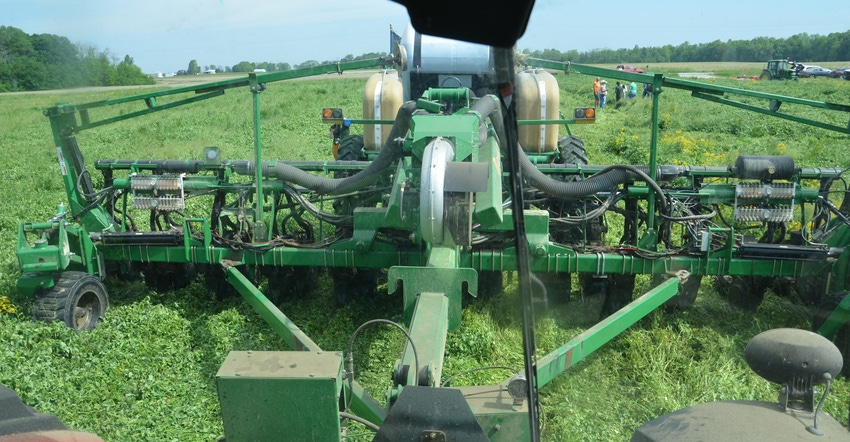August 23, 2021

I knew there was controversy brewing over the fledging nonregulatory carbon markets before some companies now vying for carbon credits threw their hat in the ring. When I climbed into the tractor cab of a longtime no-tiller to ride as he planted green into cover crops, his first question got to the point.
“How will they treat people like us who pioneered these practices for decades already?” he asked. “I’m hearing most companies only offer contracts to sequester carbon if you haven’t done it before. That’s not fair. It’s just not right.”
I was in no position to argue. And after doing my homework, I wouldn’t argue. I see his point. As he views it, why should a Johnny-come-lately be rewarded for doing things other farmers have done for a long time? No-till and cover crops may not be mainstream, but they’re far beyond the early-adopter stage. Indiana reached 1.5 million acres of cover crops this spring, a record.
2-edged sword
As with most things, there is a flip side. Carson Reeling, a Purdue University associate professor in ag economics, explains that most companies being pushed to be more sustainable need to show customers and shareholders that when they invest money in a carbon market, they’re making a change, and more carbon is being sequestered. Paying someone for already doing it doesn’t get more carbon sequestered, or so the argument goes.
Reeling even notes that if a sociologist looked at the big picture, he or she would argue that people who have already converted to no-till and cover crops did so because they perceived benefits in doing it, and they’ve reaped those benefits. Why should they be paid twice?
I see that point, but there’s a reason I’m not a sociologist. It would appear to this simple country boy that paying someone who already no-tills and uses cover crops, thereby sequestering more carbon already, would encourage that person to continue their practices, and refine them even more — perhaps sequestering even more carbon through more efficient cover crops.
Reeling says some proposed programs have included a five-year lookback provision, where people would get at least some credit for what they’ve done to sequester carbon over the past five years. He also notes that U.S. Secretary of Agriculture Tom Vilsack has indicated support for some type of help for those already sequestering carbon.
Avoid disincentives
What can’t happen is that carbon programs become a disincentive for growers continuing with and adopting soil conversation practices. That could happen in two ways. First, although hopefully not, someone might revert and till just to start over and reap carbon credit rewards for reinstituting no-till and cover crops. There may be ways to detect if someone does this, but at any rate, it would be a travesty all around.
The second possibility is more concerning, because it’s more likely. Let’s hope people just now ready to pull the trigger on no-till or cover crops don’t decide to wait a year or two until the carbon credit picture becomes clearer, hoping for higher prices for carbon sequestration. There are no guarantees what the carbon market may due in the future, and we need to save all the soil we can now. God isn’t making new land.
Comments? Email [email protected].
You May Also Like




